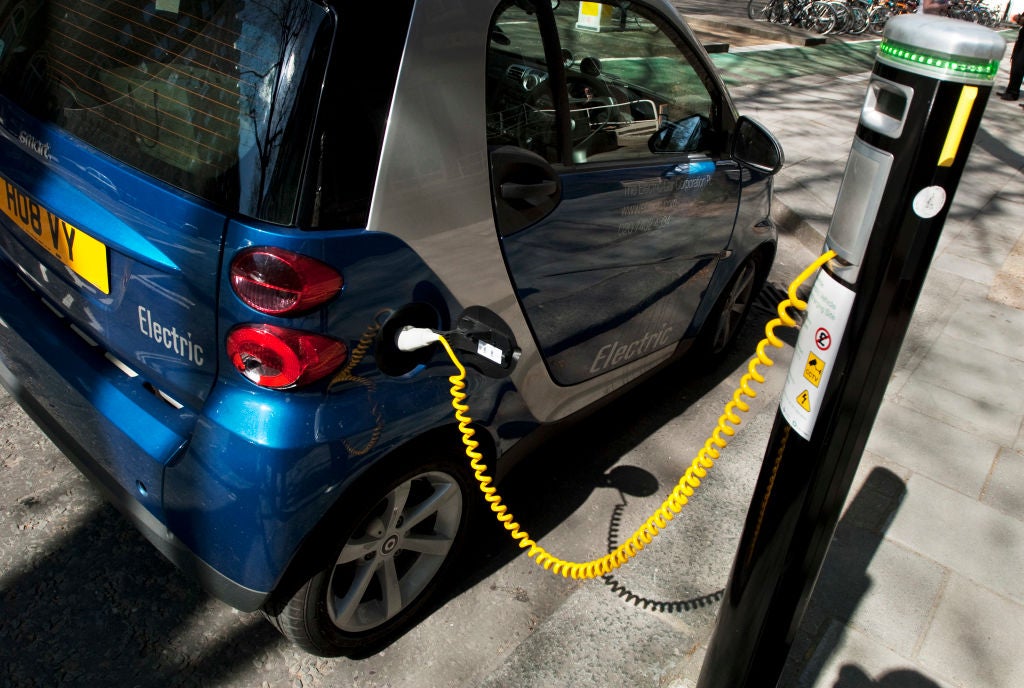
Electric vehicles (EVs) offer a cleaner, more energy efficient means of transportation than vehicles with internal combustion engines. Less well known is that they also provide a still largely unused resource to improve grid operation. Although the additional electricity demand from EVs will be manageable on a power system level, it may create the occasional challenge for parts of local distribution grids.
Smart charging of EVs can ease these periods of stress and increase overall efficiency. A “smart” charging process automatically adjusts the EV’s demand for electricity to periods of low stress on the grid – or to periods with an abundant supply of renewable electricity – and thus ensures lower costs for the user and the system.
As a result, smart charging can help avoid, or at least defer, costly investments in network capacity. With the growth of smart charging technology and services that turn the potential aggregation of residential flexibility from EV charging into a powerful, responsive system, distribution system operators (DSOs) have a golden opportunity to capitalise on EVs as a grid resource.
Smart tariffs pay off
In a 2022 study, the Regulatory Assistance Project (RAP) analysed nearly 140 tariffs and services for EV smart charging in Europe. Most of these services are based on dynamic time-of-use energy tariffs: when high renewable energy supply on the power system coincides with periods of low electricity demand, wholesale day-ahead prices drop. EV drivers save money by shifting charging to these cheaper periods, as their retail pricing follows these hourly wholesale rates.
European consumers face dramatically higher bills due to increases in energy and electricity prices over the last 12 months. Shifting EV charging to lower-priced periods has helped mitigate the rise in costs and improve the savings potential because the price spread within a given day grew even more in the last year. In Germany, for example, the difference between base and peak power prices grew from 17% to 52% between 2020 and July 2022. A reduction in levies on consumer bills counterbalanced the increase in the base prices almost entirely. Consequently, users who charge during off-peak hours can keep their charging costs stable, and those not yet using smart charging have been offered a strong incentive to do so.
DSOs are missing the boat
With growing incentives for EV drivers to use smart charging, the number of tariffs and services continue to grow too. However, RAP found that few – just 13 out of 139 – smart charging services and tariffs use data from local grid operators that reflects the actual system conditions. Without these signals, such as those provided by time-varying network tariffs or by market-based, aggregated residential flexibility, grid operators are missing out on an opportunity to optimise grid efficiency.
Designing time-varying, or "time-of-use", network tariffs can align consumer interests with those of grid operators: Similar to dynamic energy contracts that mirror day-ahead wholesale spot market prices, a dynamic network price could signal to consumers where and when to shift their electricity consumption. This can mean adjusting charging away from peak hours to limit demand peaks on the grid or shifting to times when renewables are plentiful. Simulations based on initial pilots of dynamic network tariffs suggest clear benefits for consumers with flexible resources such as EVs, and importantly, cost reductions for all other system users. EV charging, and the emerging market of smart charging services, serves as a great test bed for further trials of dynamic network tariffs.
Paving the way for flexibility
Even static time-of-use network tariffs – such as simple night and day rates – can go a long way towards improving grid efficiency, especially when combined with procuring market-based flexibility. The 2019 European Electricity Market Directive requires DSOs to use market-based flexibility wherever possible to avoid or defer grid upgrades or new connections. However, many member states still have not implemented this provision in their national legislation. The greatest flexibility resource in Europe is households, with EVs typically being their most flexible device. Without the proper regulatory framework, it will remain largely untapped.
[Keep up with Energy Monitor: Subscribe to our weekly newsletter]
Local system operators could use the aggregated flexibility offered by smart charging services to improve network operations. EV drivers benefit from their participation and DSOs gain access to a powerful distributed flexibility pool. Grid operators in the UK are leading in the use of market-based flexibility. Over just a few years, the contribution of EVs has grown as high as 22 megawatts of flexible capacity, the volume offered by smart charging service ev.energy in Scotland.
The golden ticket
As more and more EVs connect to the grid, the flexibility of smart charging offers DSOs a formidable solution. Energy regulators can help grid operators make the most of this golden opportunity to improve system management and reduce costs by designing network tariffs that reflect actual conditions on the network to encourage flexibility. Creating the framework conditions for the best use of flexible resources in local grids will help lower the cost of the energy transition – and allow smart charging to shine.



